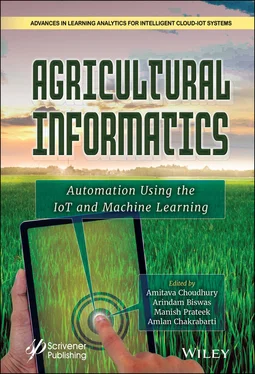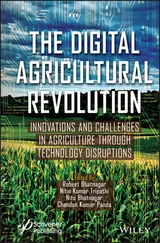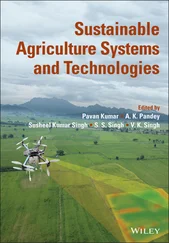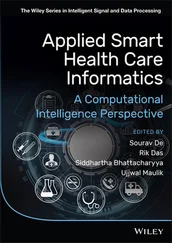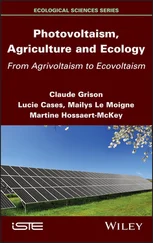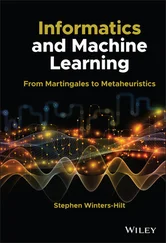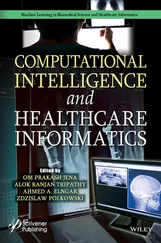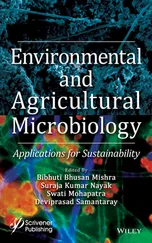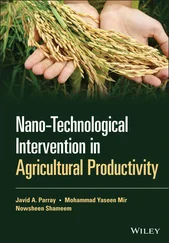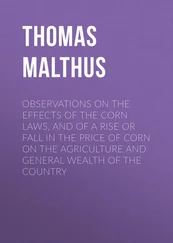Global aspects of agriculture automation through the IoT are discussed in Chapter 3. In this chapter, a case study on the IoT is highlighted which briefly discusses its basic and current applications. Also highlighted are aspects of IoT application in agriculture and related fields, and its importance in promoting agricultural informatics practice. The chapter focuses on the academic programs available in the field of agricultural informatics and related areas. Agricultural informatics programs are also proposed in concert with IoT and related fields in an international context and the potential fields in agricultural informatics are discussed as well.
In Chapter 4, the role that gathering information plays in productive crop management in smart farming is discussed. Current advances in data management for smart farming enabled by using sensor-based data-driven architecture have been found to increase efficiency in generating both qualitative and quantitative approaches in a range of challenges that will shake up existing agriculture methodologies. The chapter highlights the potential of wireless sensors and the IoT in agriculture and similar techniques which are feasible for surveillance and monitoring from sowing to harvesting and similar packaging operations. In this chapter, the authors focus on IoT technologies by highlighting the design of a novel drone concept with 3D mapping and address post COVID-19 issues in agriculture and proposed monitoring in comparative analysis. This chapter reviews an artificial intelligence-based decision-making system that will create supplementary benefits as a result of precision agriculture. Machine learning also plays a critical role in farming in terms of nutrients management. It is further found that automation in agriculture via the IoT is a proven technology that can work even for small farms such as those in India.
The study in Chapter 5discusses real-time monitoring of environmental parameters in agriculture. The main objective of this chapter is realtime visualization and on-demand access of weather parameters even from remote locations and intelligent processing using IoT-based solutions like machine learning (ML). Ever-augmenting technologies like ML pave the way for identifying and adapting changes in crop design and irrigation patterns by taking into account a large variety of multidimensional weather data to accurately predict climate conditions suitable for crop irrigation. Hence, this chapter offers a detailed review of IoT-based ML solutions for precision agriculture depending on weather and irrigation schedules. It also highlights security solutions based on ML, which are capable of handling illegal data access by intruders during cloud data storage.
The immensely difficult challenge of recognizing plant disease in an agriculture farming field is discussed in Chapter 6. An effective management strategy will enable faster and more accurate prediction of leaf diseases in plants, which will help to improve crop production and market value and also dramatically reduce environmental damage. Since recognizing diseases in plants requires a lot of knowledge about all plant diseases, it can be a time-consuming and labor-intensive process. Hence, plant disease recognition is the most promising approach in agriculture, which is attracting significant attention in both the farming and computer communities. In order to help grow healthy plants, a deep convolutional neural network (CNN) model described in this chapter aids farming by identifying leaf disease. The CNN techniques are applied to a large agricultural plant dataset for accurate detection of plant leaf diseases.
In Chapter 7, deep residual neural network for plant seedling image classification is discussed. Weed conservation within the first six to eight weeks after planting is critical because during this time weeds compete aggressively with crops for nutrients and water. In general, yield losses will range from 10 to 100 percent depending on the degree of weed control practiced. Since yield losses are caused by weeds interfering with the growth and production of crops, successful weed control is imperative. The first vital prerequisite to enact successful control is accurate identification and classification of weeds. In this research, a detailed experimental study has been conducted on a residual neural network (ResNet) to tackle the problem of yield losses. The authors used the Plant Seedlings Dataset to train and test the system. The use of ResNet to classify images with a high accuracy rate can ultimately change how weeds affect the current state of agriculture.
Smart farming technologies continue to empower farmers, which helps them address the significant problems they face through much better remedies. The growth pattern and environmental parameters of crop growth provide scientific guidance and optimum countermeasures for agricultural production. A proposed system is presented in Chapter 8that uses a Raspberry Pi board and an array of sensors, i.e., PIR sensor, pH sensor, and capacitance dielectric soil moisture sensor, which was proven to be more robust and accurate than existing systems in tracking soil content and security of the crops. If soil nutrients, pH, or moisture of the soil is not up to par with the requirements for a given crop the user is notified to take action via an alarm buzzer with an LED indicator light. A monitoring system consisting of an unmanned aerial vehicle (UAV) equipped with an RGB-D sensor is deployed to regularly check the status of the crops, so that in cases where pests attack crops or when crop health begins to degrade, it can be efficiently noted and the necessary steps can be taken to correct the problem. The various data generated is stored in the cloud and is sent to user websites and mobile applications, which will be used for further study to enhance the agricultural process.
An integrated application of IoT-based wireless sensor network (WSN) in India’s agriculture system that uses the hybrid optimization technique is discussed in Chapter 9. A new hybrid algorithm, i.e., GA-MWPSO, has been used for solving nonlinear constrained optimization problems. To test the competence of the proposed algorithms, a set of test problems has been considered, solved and compared with the existing literature.
Chapter 10discusses multicopter unmanned aerial vehicles (UAVs) designed for heavy lift agricultural operations. The knowledge of flying multicopter UAVs and the workings of other components should be strong while developing UAVs; otherwise, the design and assembly of UAVs leads to poor performance or even design fails. Configuration of UAVs includes the size and shape of the UAV and the proper matching of brushless DC electric (BLDC) motors and propellers. Therefore, it is essential to have a deep knowledge about each and every component and its design and selection requirements. In this chapter, information about several UAV systems and components and basic principles of design are presented.
Chapter 11describes various security challenges in IoT-enabled agricultural system applications. The challenges facing these systems are software simplicity, secure data generation and transmission, and lack of supporting infrastructure. But at present the biggest obstacle is lack of smooth integration with the agricultural industry and lack of an optimally skilled human workforce. In addition to the need for sensors to work wirelessly and consume low power, they should have better connectivity and remote management, and the complexity and security of software should be rectified. There is also a high demand for fail-safe systems to mitigate the risk of data loss in any faults occurring during operation.
Chapter 12looks at optimized crop treatment, such as watering, pesticide application, accurate planting, and harvesting, directly affects crop production rates. Using an organized fashion of field structure and proper irrigation scheduling and providing early prediction of weather conditions directly on the mobile devices of farmers may save thousands of lives, since this technique enables farmers to effectively produce crops in all growing seasons and losses will be minimized, ultimately decreasing the death toll due to lack of food in growing populations. For pest control, various ultrasound frequencies are used. When any pest interacts with any part of the plant, a capacitive touch shield can be used to detect its presence, generating an alert signal via an ultrasonic signal generator. For the supply of constant and continuous energy to the sensor, a solar cell powered battery needs to be set up in the field. To reduce power consumption of the battery, some logic needs to be set up to activate the sensor network at a particular time, with the sensor network otherwise remaining idle. A small exhaust fan is incorporated as a heat sink to protect the sensor devices or drive circuitry from the excess heat of the sun so that the longevity of the sensor devices and circuitry will increase. The IoT enables plane region step farming and animal and pest attack control, which truly enhances crop production rate.
Читать дальше
